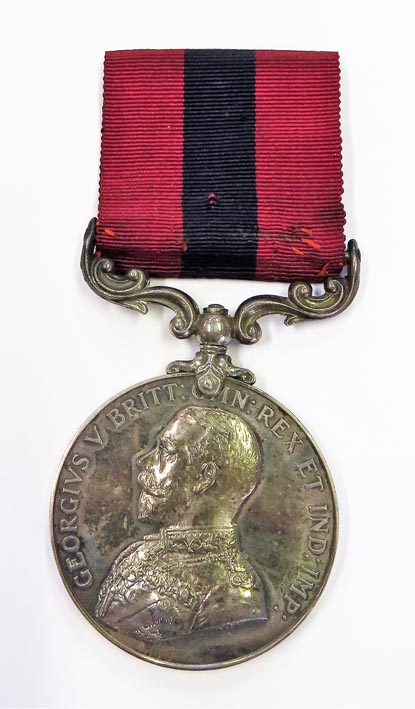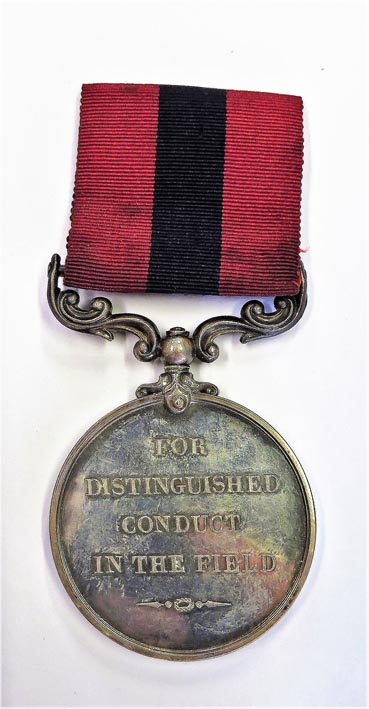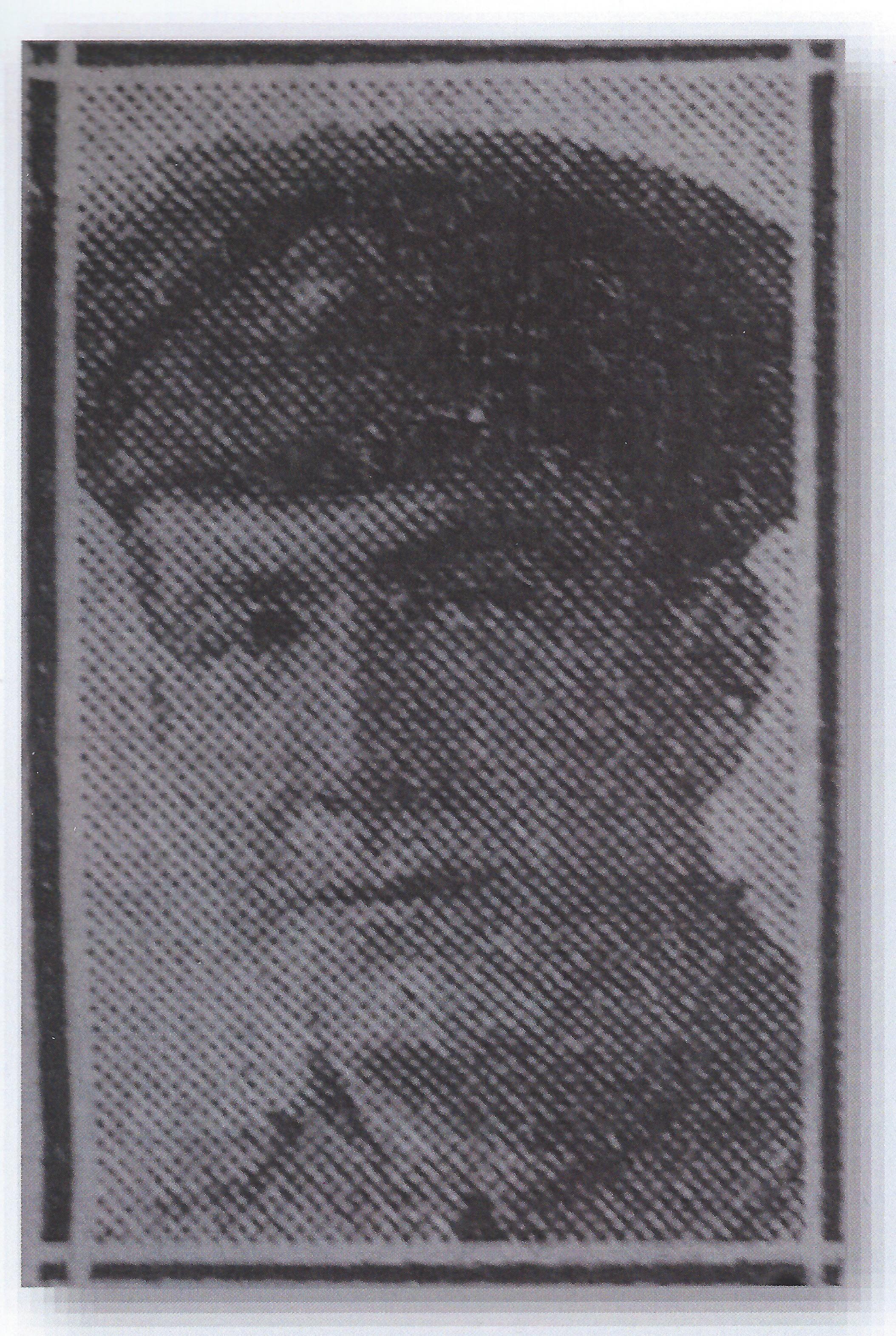This Distinguished Conduct Medal was awarded to John Weldon, who lived most of his short life in Heaton. The medal is now in the collection of the Northumberland Fusiliers Museum and Archive at Alnwick Castle. John’s name, rank and service number (16/305) is engraved around the curved surface.


The Distinguished Conduct Medal had been established by Queen Victoria in 1854 and was awarded to non-commissioned officers for ‘distinguished, gallant and good conduct in the field’. It was the second highest award for gallantry in action after the Victoria Cross.
Before the War
John Weldon was born c 1885 in Stannington, Northumberland to parents, Margaret and John, a North Eastern Railways signalman. In 1891, he appears on the census as the fifth of seven children. By 1901, the family were living at 44 Chillingham Road, Heaton. Both John and his older brother, Thomas, had followed in their father’s footsteps, with responsible jobs as signalmen at the tender ages of 17 and 15 respectively.
The 1911 census shows that John’s mother had given birth to 11 children, seven of who survived. John senior was now working as a railway porter and his wife was a shopkeeper. John junior had a new trade: a joiner and carpenter. The following year, he married a Newcastle girl, Isabella Laidler, and the couple were living at 48 Mowbray Street. The next year, their only child, Margaret Isabella, was born. Sadly she was not to get to know her father very well.
When his daughter was only one year old, World War One was declared and John was recruited by Northumberland Fusiliers into its 16th Battalion, a so-called ‘Pals’ regiment, known as ‘The Commercials’, formed in August 1914.
Bravery recognised
An ’embarkation roll’ dated 23 November 1915 survives, which shows that John was a member of ‘B Company’. We know that he was awarded the Mons Star medal, available only to veterans of the 1914/15 campaigns in France and Belgium. A history of the regiment confirms that the battalion landed in Boulogne on 22 November 1915.
John had, by now, been promoted to the rank of Company Sergeant Major, which is the senior non-commissioned soldier of a company. He would have been responsible for, amongst other things, the supply of ammunition, evacuating the wounded and collecting prisoners of war. Along with his comrades, he was on active duty on 1 July 1916, the first day of the Battle of the Somme. On this day, 1,644 Northumberland Fusiliers were among 19,240 British soldiers who died in just a few hours.
The regimental battle diary, held by the Northumberland Fusiliers Museum, helps bring that terrible day to life. Here are just a few extracts:
Zero time was fixed for 7:30am…A and B Companies moved forward in waves – instantly fired on by machine guns and snipers…The enemy stood on their parapet and waved to our men to come on and picked them off with rifle fire…The enemy’s fire was so intense that the advance was checked and the waves or what was left of them, were forced to lie down. C company moved out to reinforce the front line, losing a great number of men by doing so… At 7:40 the reserve D company were ordered to advance. Getting over the parapet the first platoon lost a great number of men. As a result the remainder of the company was ordered to ‘stand fast’ and hold the line… At 08:20 the 16th Lancashire’s were asked to reinforce 16th NF in front line. At 09:30 message received from Mortar Battery to say they their gun had been unable to fire since 08:15 due to a lack of ammunition, but some had now arrived… The enemy’s artillery continued firing all day. Our artillery fired all day but it was only occasionally that it appeared heavy and effective… It was reported that the men of the attacking companies moved forward like one man until the murderous fire of the enemy’s machine gun forced them to halt… Not a man wavered and after nightfall we found in several places, straight lines of ten or twelve dead or badly wounded as if the Platoons ‘Had just dressed for Parade’… At 09:00pm orders received to withdraw men who lying out as it was dark. At 11:00pm the relief by another regiment was complete and the remnants of the battalion – 8 officers and 279 other ranks got back at 01:30am.
John was among the survivors. A citation in the ‘London Gazette’ some months later, on 13 February 1917, gave further indication of what he had endured:
‘For conspicuous gallantry in action. He led his platoon with great courage and determination, himself accounting for many of the enemy. Later he dressed 13 wounded men under fire.’
And just over a year after that tragic day, John Weldon DCM, was given a ‘Hero’s Reception’ at the Newcastle Commercial Exchange (The Guildhall) on the Quayside, which was reported in the Newcastle Daily Journal, Thursday, July 12, 1917.
The Sheriff of Newcastle, Arthur A Munro Sutherland (a ship owner, who became Lord Mayor in 1918 and was later to own the Evening Chronicle for a short time) presided. He reported to the assembled throng that Weldon’s company went over the top at 07:30am and when all the officers were out of action, he took charge of the company. He did not return to the trenches until 10:45pm after lying out in ‘No Mans Land’ under continuous heavy fire. He was known to have killed or wounded 29 Germans. His rifle was twice shot out of his hands. At a later stage in the afternoon he crawled from shell hole to shell hole and was able to collect 15 badly wounded men and get them back to the British trenches. Throughout that terrible day, Sutherland concluded, the conduct of Weldon was magnificent.
Three cheers were given and Company Sergeant Major Weldon acknowledged the kind things said about him. Colonel Ritson of Northumberland Fusiliers also spoke in high praise of Weldon’s gallantry and said that he would be returning to his battalion at the front.
Death of a Hero
He did. But on 22 September 1917 another article in the Newcastle Daily Journal, reported that CSM John Weldon DCM had been seriously wounded in the shoulder, arm and side but was reported to be ‘doing well’.
Sadly, the following day, Company Sergeant Major John Weldon died as a result of his wounds in the 14th Hospital at Wimereux, aged 32. He is buried in the Communal Cemetery there.

As mentioned previously, Northumberland Fusiliers Museum and archive now has John Weldon’s Distinguished Conduct Medal in its collection and he is listed in ‘Historical Records of the 16th (Services) Battalion Northumberland Fusiliers’ by Captain C H Cooke MC for the Council of the Newcastle and Gateshead Incorporated Chamber of Commerce, The Guildhall, Newcastle, published in 1923. He is also mentioned on the war memorial of Nedderton Council School, Northumberland where he had been a pupil. Locally, he is among the 950 servicemen listed on the St Mark’s Church, Byker war memorial, situated in what is now Newcastle Climbing Centre on Shields Road.
We did wonder whether Weldon Crescent, built in High Heaton between the wars, might commemorate him but it seems much more likely that, like most of the surrounding streets, it was named after a small settlement on the River Coquet in Northumberland.
Acknowledgements
Researched and written, as part of Heaton History Group’s ‘Shakespeare Streets’ project, by Arthur Andrews with additional input from Chris Jackson. Special thanks to The Northumberland Fusiliers Museum archivists, Alnwick Castle and to Anthea Lang, who found John’s name on St Mark’s war memorial.
Can you help?
If you are related to or know more about John Weldon, have a photograph of him or have found his name on a war memorial, we would love to hear from you. You can post directly to this website by clicking on the link directly below the title of this article or alternatively email chris.jackson@heatonhistorygroup.org.
Update
Read here about a ceremony to mark John’s bravery and the centenary of his death.

Read about a commemoration to John Weldon here
http://www.chroniclelive.co.uk/news/history/untold-story-war-hero-who-13656141
Arthur,
An interesting &well written article.
Regards
Graham
Thank you!
Lovved reading this thank you